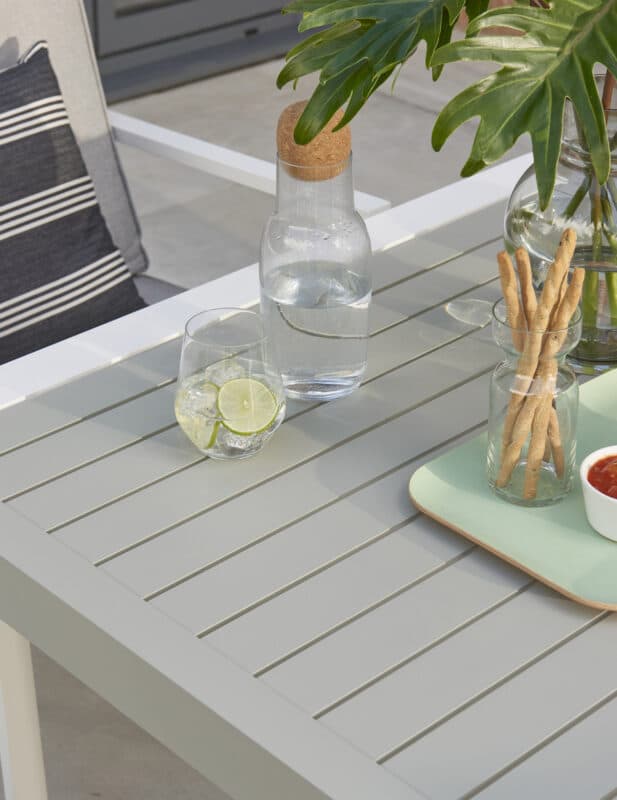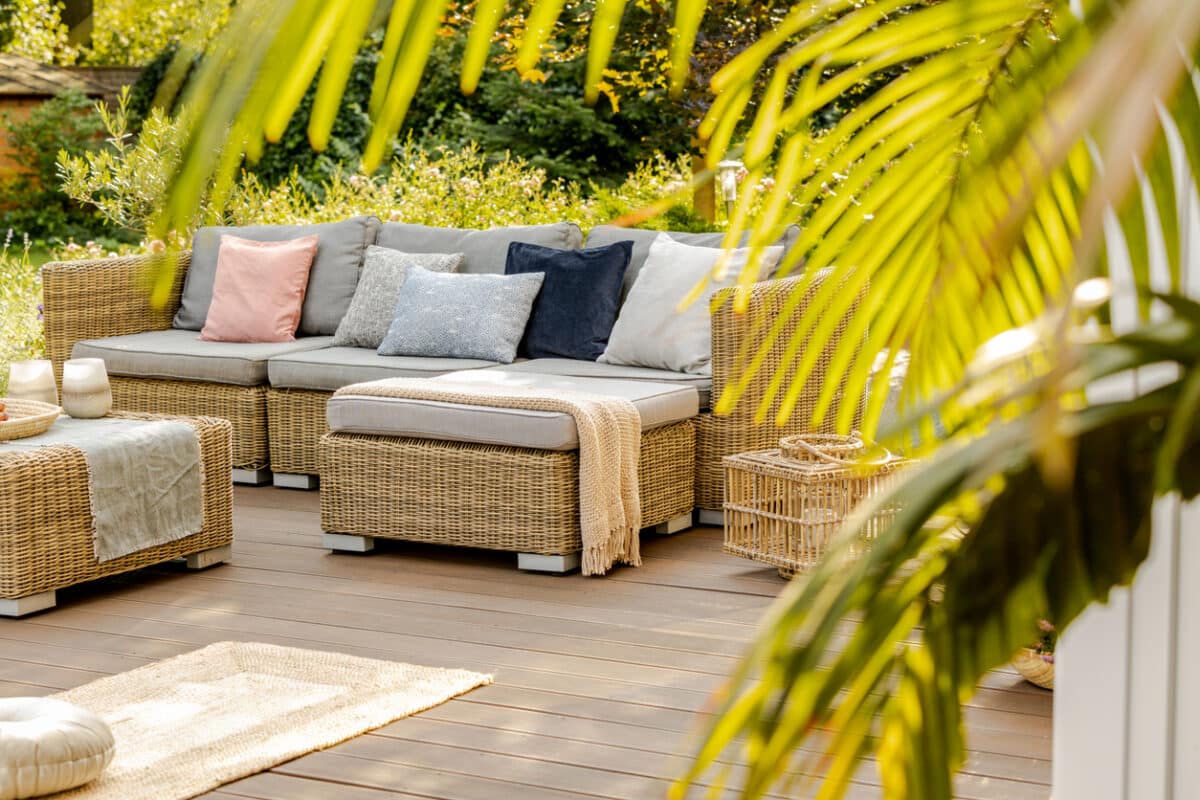Garden Style
About Rattan – From the 1600s to now
We sell stunning rattan furniture made from synthetic rattan. It’s a look you’ll adore. But what’s the history of rattan? How come it’s so popular, where does the natural version come from, how is the synthetic version made? So many questions… so let’s answer them all for you.
If you’re in the market for some top quality synthetic rattan furniture, made with love and care, read on for a long article about rattan. This is your chance to become an expert in a lovely and unusually versatile natural material, and get just as well informed about today’s popular synthetic alternatives.

Introducing synthetic rattan
Synthetic rattan furniture is a great option. It gives you that classic rattan look without all the maintenance. Manufacturers generally use polyethene to produce artificial rattan, also resins made using PVC, PU and PE. PE tends to be the best quality and the longest-lasting rattan-look stuff. And that means it comes with the least maintenance and the longest life.
If you’ve ever seen garden furniture made from a thin plastic fabric printed to give it a rattan-like texture, that’s the cheapest kind. It doesn’t really look or feel like rattan. It lasts, but nowhere near as long. It tears and breaks pretty easily. If it looks like real rattan, with separate fibres actually woven together, it’s likely to be the good stuff, the material used to make our beautiful garden furniture.
Synthetic rattan, also called rattan effect, is weatherproof. It doesn’t degrade in the sun, it’s UV-protected. It doesn’t mind the damp. In fact the best faux rattan garden furniture can last you 10-20 years when you look after it. Faux rattan is a lot stronger than the real version too, without the natural fibres that can make authentic rattan disintegrate faster. It’s simply better at resisting everyday wear and tear.
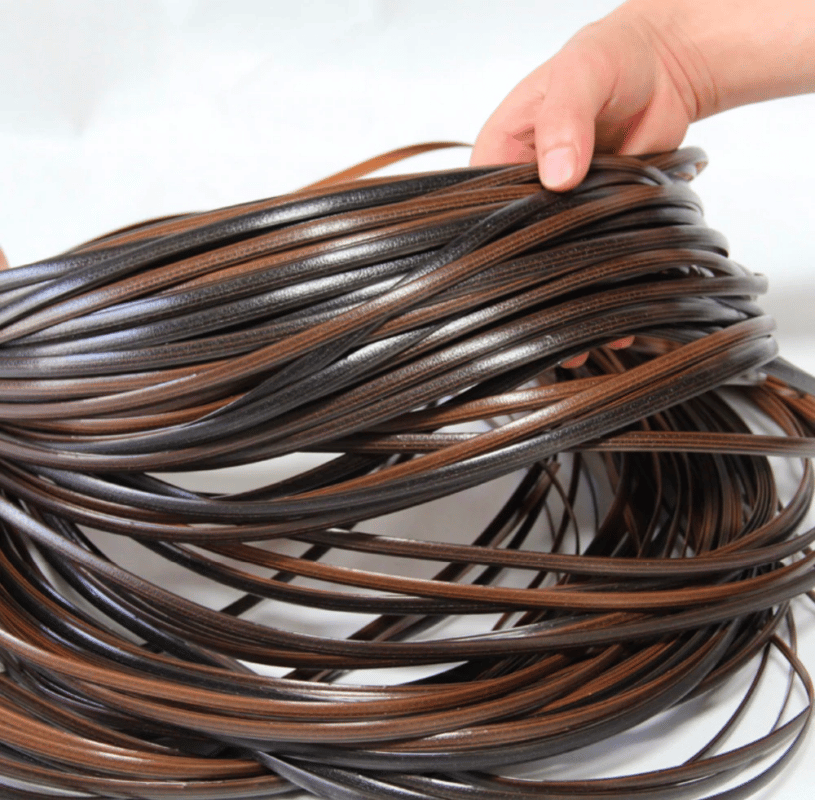
Garden furniture made from synthetic rattan looks very much like the natural stuff, woven in the same way as the plant fibres in real rattan are. Natural rattan’s really lovely but it’s a lot less durable, easily damaged by sun, frost and rain, and nowhere near as long-lasting as the man-made alternative.
Next, let’s take a look at real rattan, and where it comes from.
About natural rattan – The plants that give us real rattan
Rattan, also spelled ratan, is the name for around 600 species of climbing palms in the Calamoideae sub-family. Most of them come from amazing old-growth tropical forests in South East Asia, tropical Asia, and some parts of Africa. Their climbing habits define them as ‘lianas’.
Around 70% of rattans grow in Indonesia, common on Borneo, Sulawesi, and Sumbawa. The rest come from the Philippines, Sri Lanka, and Malaysia. Some grow in the Indian regions of Bangladesh and Assam.
Why use lianas?
Rattan palms are different from woody lianas. They can grow hundreds of metres long. Being palms, rattans don’t branch out or grow roots when they contact the soil. And being monocots (it’s complicated!), there’s no secondary growth. This means the diameter of a rattan palm stem is always the same, making it perfect for weaving strong, regular structures. Whether it’s a young or older plant, the width is always 2–5cm diameter.
About rattan – When did rattan furniture come to the West?
In the 1600s rattan began its journey around the world. The perfect material for wickerwork, it was brought to Europe from South East Asia by Portuguese traders. It wasn’t long before rattan cane began turning up in furniture design, a trend that quickly spread across Europe.
By the time the British Empire peaked, it was a hugely fashionable material, the darling of the Victorians and right at the heart of a hot trend for wickerwork. In 1851 rattan furniture was a star of the show at the Great Exhibition. Eventually it was adopted by the Arts and Crafts movement, who loved it for its honest simplicity, functionality, and beauty. It was a desirable material in Modernist design, used in Marcel Breuer’s famous wicker-seated chair dating back to 1928.
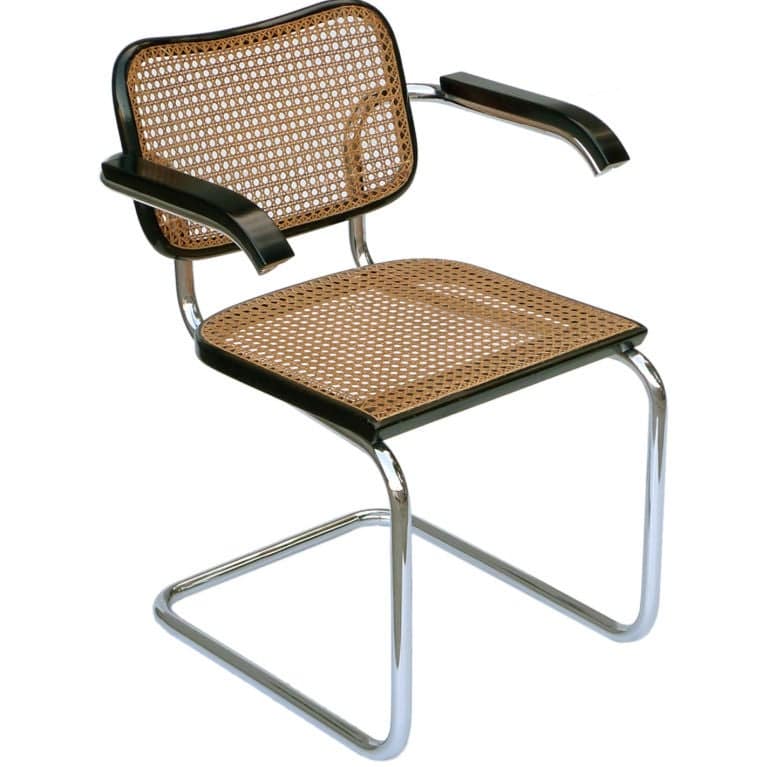
A spike in the popularity of rattan furniture from the 1930s to the 1940s saw the material used to make tables, chairs, beds, desks, lampshades, wastebaskets, chests of drawers and more.
There was another dramatic surge in demand during the 1950s. It carried on until the ’70s, when rattan furniture and homewares sat at the heart of bohemian-style interior design and the times’ chilled arts and crafts-style aesthetic. By the time synthetic rattan came along, the look had become a classic.
The 2020s have seen a return to natural materials. Real rattan is still used to make garden, summerhouse and conservatory furniture. But more people choose synthetic rattan because it lasts longer, takes less work, and looks just as good.
Organic rattan FAQ
What’s the difference between rattan and wicker?
Rattan and wicker are different. Rattan is a plant. ‘Wicker’ is an ancient way of weaving rattan, also used to describe woven straw, bamboo and willow.
How is natural rattan harvested?
Rattan can be harvested year-round. Because it’s almost impossible to split or break, farmers cut it into strips. Thin strips are either dried by the sun or smoked dry. Thicker strips can be boiled in oil to dry the wood out completely. Once prepared it’s cut into smaller strips, then woven to make everything from furniture to baskets, canes and walking sticks – sometimes called Malacca or Manila canes, depending on where they came from.

What else is natural rattan used for?
Rattan shoots contain lots of carbs, great for energy, and the fruits taste sour like citrus. Some rattan fruits give off a red resin called dragon’s blood, used as a medicine and a dye. It was even used to dye violins, giving the wood that gorgeous rich, deep red colour.
Why is natural rattan less popular?
These days, all too often, rattan palms are overexploited. Farmers can cut the stems too young, which makes it hard for them to sprout again. It’s unsustainable harvesting, damaging precious forests and ecosystems. The processes used to prepare the finished product pollute forests with toxic chemicals, petrol and oil, which impacts the soil, air and water. This ultimately messes with local people’s health and kills wildlife.
Today, rattan harvesting from the wild almost always requires a permit, including in the Philippines, Sri Lanka, India, Malaysia, Laos, Ghana, and Cameroon. The Philippines has set an annual limit on the amount of rattan cut, in an effort to conserve the plants. At the same time people are beginning to explore the potential for sustainable rattan production via monoculture and intercropping, so it isn’t all bad news.
What else can rattan palm be used for?
In 2010 a team of scientists in Italy began testing rattan wood to make artificial bone. First it was super-heated in a furnace, before adding calcium and carbon. They heated it again, this time under massive pressure. Ten days later, the result was an almost exact replica of bone. Testing of the team’s wooden bone implants in sheep revealed no rejection by the animals’ bodies and, in 2019, human tests were due to begin. Amazing!
The many benefits of synthetic rattan
Synthetic rattan furniture is weatherproof. But not all modern faux rattan furniture is the same. The quality depends on the materials used, the frame, and the weave itself.
Synthetic rattan garden furniture is made by weaving lengths of tough, durable plastic rattan around a frame. The frames used to be wooden, now they’re more likely to be aluminium, which is strong and lightweight as well as totally weatherproof. Being so light, it’s a lot easier to move around than genuine natural rattan – and it also happens to cost less.
Vertical strands of rattan are wound around the frame first, then the horizontal strands are woven in between. The result is incredibly strong. When different shades of rattan are used, the result is even more natural thanks to the colour variation. We sell some beautiful faux rattan garden furniture with a multi-colour weave for a stunning natural effect, including this Morston garden dining set from Norfolk Leisure.
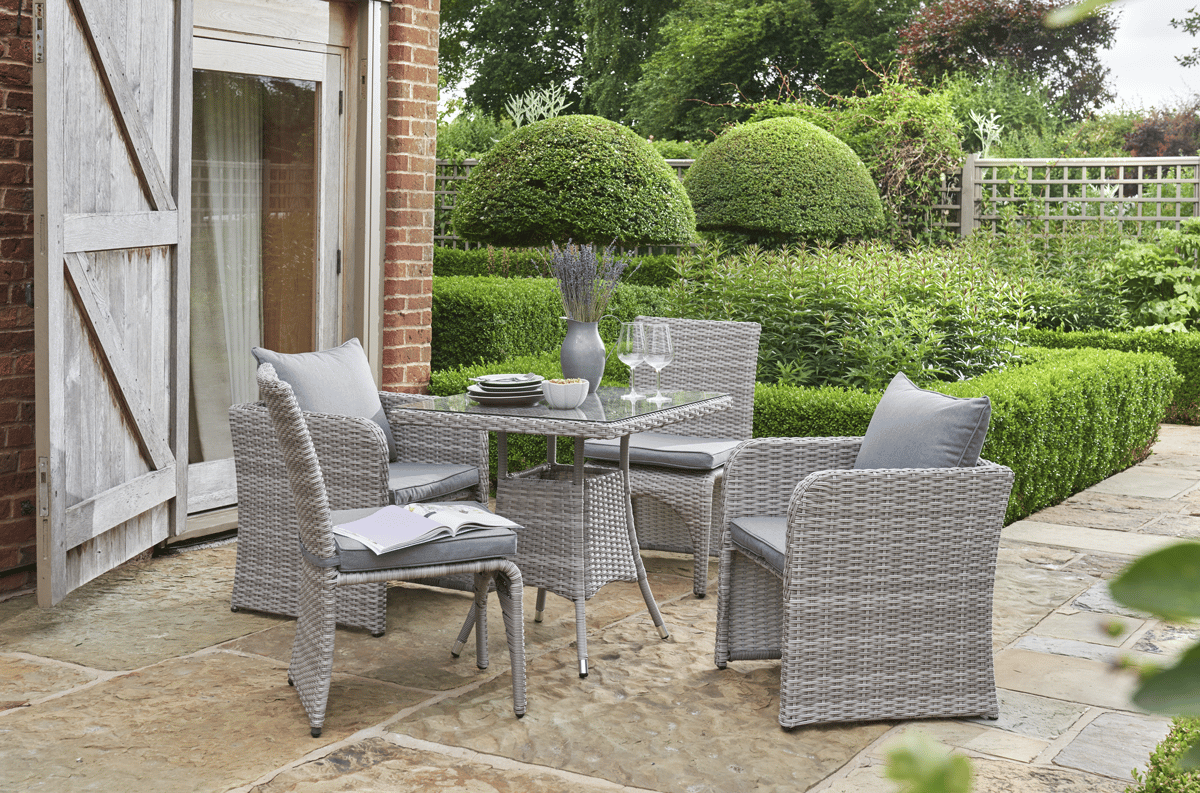
How to look after synthetic rattan garden furniture
So how do you keep your beautiful synthetic rattan furniture in the best condition? It’s actually very easy. Clean it with warm water and a dash of washing up liquid every few weeks, then dry it with a cloth. Cover or stow it through the winter months and in bad weather. When it’s sunny, take the cover off and let it breathe to help prevent mould.
Now you know all about rattan. Which of our deliciously attractive synthetic rattan garden furniture sets floats your boat the most? Happy shopping!

